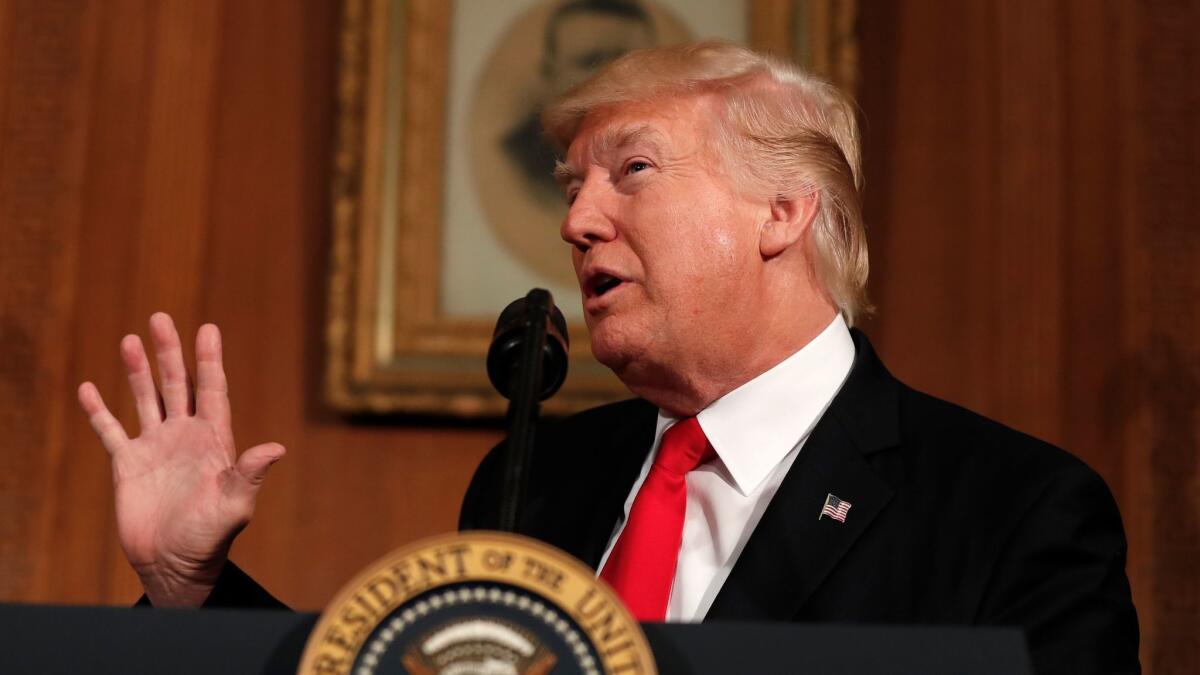Op-Ed: Trump’s Candy Land School of Tax Reform

The Republican Party is devoted to tax reform, by which it really means tax cuts, but underneath this apparent laser-like focus lie conflicting schools of thought. The one embraced by President Trump is the Candy Land School.
The Candy Land School argues that tax cuts are always good, and that resulting government deficits are inconsequential, ostensibly because those tax cuts will trigger unprecedented economic growth that in turn will yield even higher tax revenues. It promises gifts for all today, and assumes away tomorrow.
Empirical evidence from the last several decades points to the conclusion that changes in U.S. tax rates do not map neatly onto the path of economic growth. One important reason for this is that the United States already has some of the lowest tax rates in the world — as a percentage of national income (gross domestic product), the second lowest among all large economies. Americans already keep the lion’s share of their income, and so changes in tax rates do not radically alter economic incentives. Well-designed tax reform, particularly of the corporate tax, can improve growth prospects somewhat, and thereby mitigate the cost of reductions in rates. That is not the same as tax cuts paying for themselves.
Economic growth cannot magically be summoned through any simplistic incantation.
Economic growth cannot magically be summoned through any simplistic incantation. Moreover, the U.S. today faces a fundamental demographic challenge to growth: The increasing portion of the population that is over 65. Within the next couple of decades, the number of Americans over 65 will increase by 50%, compared with adult Americans under that age. Of course, the elderly are expensive to maintain — they earn less and consume more social insurance than do younger and healthier adults.
Deficits do matter, at least when they reach the magnitudes created by Candy Land logic. The reason is simple: Deficits are funded through government borrowing. As government borrowing balloons, an ever-increasing percentage of government spending must be devoted simply to servicing the outstanding debt, which leaves less for all other government activities. Moreover, private firms find it more and more expensive to borrow to fund their businesses, because they must compete with the government for investors’ money. This results either in a “crowding out” of businesses from the debt markets, or, for more complex reasons, an increase in U.S. trade deficits. Taken together, these consequences mean that large-scale Candy Land tax cuts actually are anti-growth moves, as the nonpartisan Congressional Budget Office has repeatedly warned.
The right way to think about government debt is to compare it to our national income, because in the end it’s our income that will service our debt. The federal debt-to-GDP ratio today stands at about 77%; at the end of World War II, the highest point on record, it was a bit over 100%. According to the CBO — the official scorekeepers — we already are on a path for the debt-to-GDP ratio to hit 150% in 30 years; a $2-trillion Candy Land-style tax cut would send that ratio to something in the neighborhood of 200%.
The sad and sober truth is that Americans are undertaxed. We are undertaxed relative to the government-investment and social-insurance programs we all demand, and we are profoundly undertaxed relative to our peer countries. Today, all levels of U.S. government, combined, collect about 26% of GDP in taxes. In Germany, a reasonably successful capitalist economy, that figure is 37%. Eleven percentage points of GDP in government revenue would translate to more than $2 trillion this year alone — $2 trillion that could go toward eliminating the deficit and funding important programs, such as better healthcare and improved infrastructure. So steep a tax increase is unrealistic, but the problem with government lies in its systematic underfunding relative to the demands we place on it.
The competing Republican school of thought, embraced by House Speaker Paul D. Ryan, has as its objective the dismantling of social insurance of all forms, with the resulting savings redistributed to the affluent through tax cuts. We can think of it as the Cruella de Vil School of fiscal policy. The failed “Repeal and Replace” bill was in fact not healthcare legislation, but rather a tax bill along these lines. Its principal objective was to remove Medicaid insurance protection for millions of low-income Americans and transfer the savings to high-income taxpayers. The Cruella de Vil School is mean spirited and inconsistent with the actual desires of most Americans, but unlike the Candy Land School, it is at least intellectually honest.
Trump’s proposed Candy Land giveaways probably are not a serious legislative proposal at all, but simply a grandstanding play to his base. Republican leadership in Congress will give it the short shrift it deserves. But the underlying theme that what this country needs is a big tax cut is seductive, politically salient and profoundly wrong. It’s time for a more honest appraisal of how to go about financing the government we actually want.
Edward D. Kleinbard is a professor at USC’s law school. He was formerly chief of staff for Congress’ Joint Committee on Taxation.
Follow the Opinion section on Twitter @latimesopinion or Facebook
More to Read
A cure for the common opinion
Get thought-provoking perspectives with our weekly newsletter.
You may occasionally receive promotional content from the Los Angeles Times.










